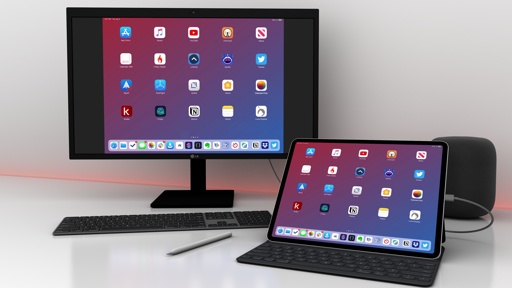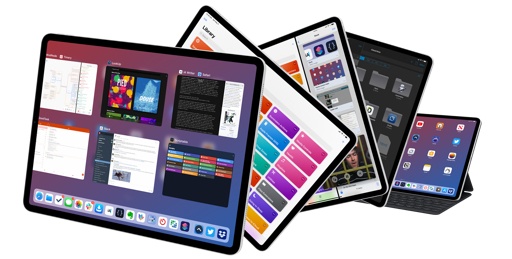
Conclusion
When Steve Jobs introduced the original iPad in 2010, he positioned the tablet as a third device in between a laptop and a smartphone that was going to be better at key tasks uniquely suited for a large multitouch device. He was right.
But time changes everything – even Steve’s ideas from a decade ago. And in this case, it isn’t just the passing of time that altered the iPad’s course: a few years ago, Apple itself sought to make an iPad that could be something more than a third device for users who wanted to go beyond the longstanding assumptions of what a “tablet” could do.
Today, the iPad Pro is my laptop, the iPhone is my pocket computer, and the Mac is the third device that’s better at specific tasks.
In the past seven years, the iPad has become more than “just a tablet” for me: it was the portable computer that helped me get work done from a hospital bed and it’s now a professional machine I can plug into a 4K monitor, use to write longform stories, and even record podcasts on. The evolution of the iPad and ecosystem of hardware and software surrounding it has produced a hybrid device that can be held, transformed into a laptop, or turned into a workstation with multiple connected accessories. I’ve never used anything else like it, and it’s hard for me to summarize the impact that the iPad, particularly in its Pro flavor, has had on my professional life.
As I hope to have demonstrated in this story, the iPad Pro is capable of filling roles you may not typically associate with the idea of a tablet. But as I’ve also argued, there are still several areas where the iPad is behind macOS in terms of file management, multitasking, app automation, and integration with external hardware. Let me be clear on one key concept though: for the iPad to evolve, I don’t think Apple should directly copy features that have been done on the Mac before.
I think there is plenty iOS, and by extension the iPad, can learn from macOS and the long history of the Mac. What matters is the end goal: I want the iPad to empower me to achieve the same results I can produce on a Mac, even – and especially if – that power comes from old ideas that have been rethought, redesigned, and re-engineered for the new age of touch and hybrid computing.
At a fundamental level, after seven years of daily iPad usage, I believe in the idea of a computer that can transform into different form factors. The iPad is such a device: it gives me the freedom to use it as a tablet with 4G while getting some lightweight work done at the beach, but it becomes a laptop when paired with a keyboard, and it turns into a workstation when hooked up to an external display, a USB keyboard, and a good pair of headphones. For me, the iPad is the ultimate expression of the modern portable computer: a one-of-a-kind device that morphs and scales along with my habits, needs, and lifestyle choices.
A few years ago, I described the iPad as a “liberating” experience that married power to portability and allowed me to work from anywhere. I stand by that concept, but I’ll revise it for 2019: the iPad is a liberating device that transcends its form factor. Its range of configurations, combined with a new generation of powerful iOS apps, delivers a flexible experience that eludes classification.
Today, the iPad is more than just a tablet: it’s a computer that can transform into anything you need it to be.






